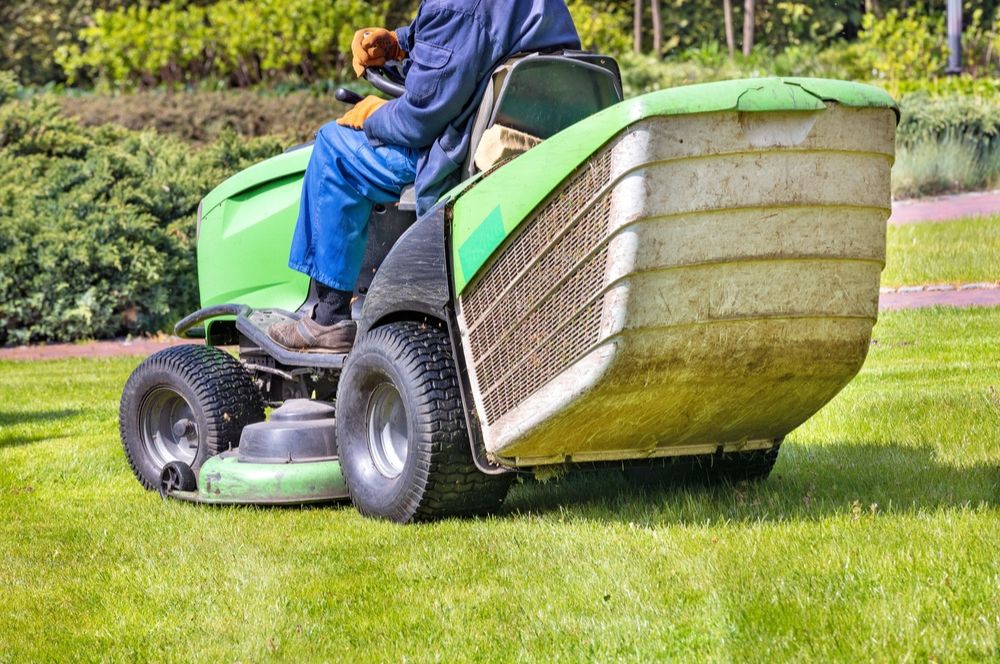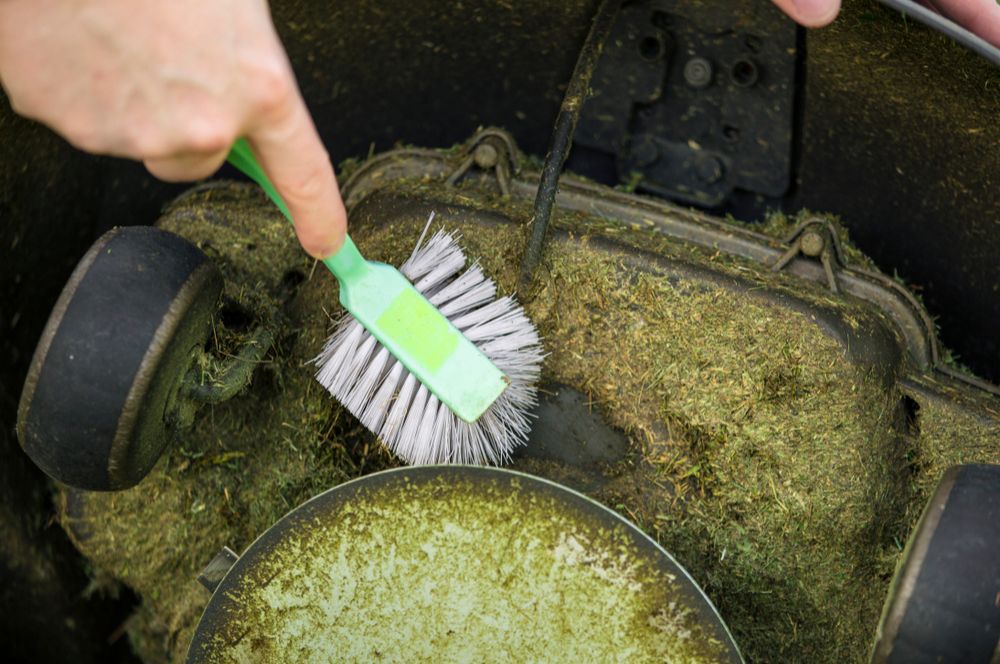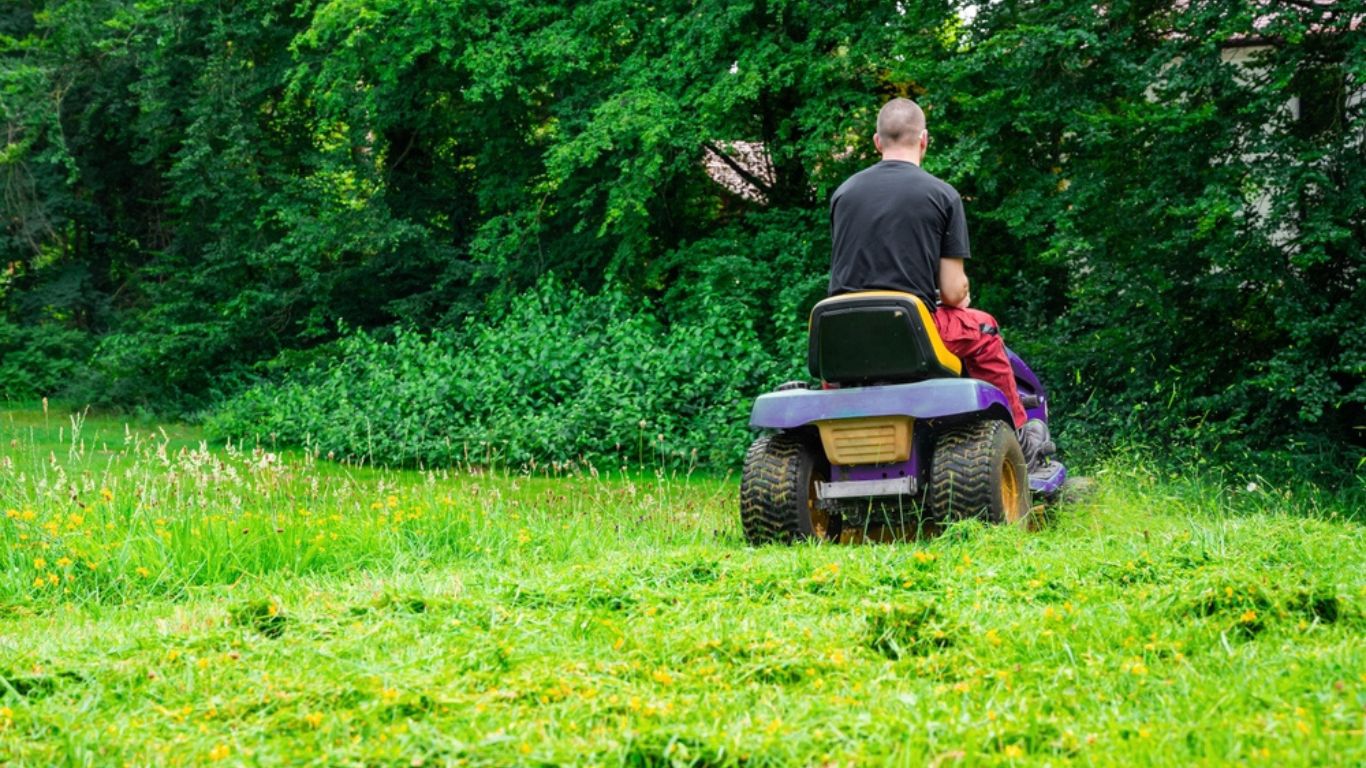When I made the switch to a riding lawn mower, it didn’t just feel like an upgrade—it was a total game-changer. If you’re anything like me, trying to balance a packed schedule while keeping your yard looking pristine, learning how to use a riding lawn mower is a real lifesaver. For larger yards, a push mower feels like an endless chore, but with a riding mower, you cover a lot more ground in way less time—all while sitting comfortably.
But it’s not just about making things easier. The level of control and precision you get with a riding mower can completely transform the way you care for your lawn. Suddenly, the whole process becomes efficient and almost enjoyable. Ever catch yourself wishing there was an easier way to keep that perfect, polished look without all the hassle? Well, learning how to use a riding lawn mower might be the solution you’ve been searching for. Curious to know more? Check out the full guide over at Best Lawn Mower for Hills.
How to Safely Prepare Your Riding Lawn Mower for First Use?
When I first began using a riding lawn mower, I quickly learned that good preparation makes all the difference. Before you even think about firing up the engine, it’s essential to go through a pre-start routine. The most important thing? Getting familiar with the owner’s manual. Every model has its quirks, and knowing those specifics can save you from headaches later on.
Pre-Start Checklist
One of the first steps in mastering how to use a riding lawn mower is understanding its unique features and safety protocols. That’s why reading the manual is non-negotiable. Each mower has its own set of characteristics, and being aware of them can help you avoid costly errors.
Before every mow, I always take a moment to check a few key things: fuel level, oil level (using the dipstick), and tire pressure. Ensuring these are in check keeps the mower running smoothly. It’s also wise to keep an eye on the fuel gauge, spark plug, and carburetor regularly. These small checks not only extend the life of your mower but also help you stay safe while operating it.

Understanding the Controls
The first time I climbed onto a riding lawn mower, I’ll admit—the controls felt a bit overwhelming. But after spending a little time with it, I got the hang of things pretty quickly. To get started with how to use a riding lawn mower, you’ll want to get familiar with the key components: the ignition switch, throttle, choke, and blade engagement lever.
The ignition is your go-to for starting and stopping the engine, while the throttle helps you manage the mower’s speed. If you’re dealing with a cold start, the choke is your best friend—it helps the engine fire up smoothly. And then there’s the blade engagement lever—that’s where the real action happens. Engage the lever (usually by pulling or holding it down), and the blades come to life, ready to mow. Releasing the lever stops the blades, which is a critical safety feature, preventing any accidental injuries when you need to stop or pause your mowing session.
Starting Your Engine: A Step-by-Step Guide to Powering Up Your Riding Lawn Mower
Seating and Safety
Before you even think about starting your mower, the first thing you need to do is check your seating and safety. It might sound like a small detail, but how you sit can make a big difference in both comfort and safety. First off, make sure the mower is parked on flat, level ground to avoid any accidental rolling. Once seated, plant your feet firmly on the footrests or the ground—nowhere near the mower deck or blades. Sit up straight with your back aligned and your shoulders relaxed; this helps with balance and control while mowing. Hold onto the steering wheel or handlebars with both hands and sit squarely in the middle of the seat to keep from leaning to one side, which can throw off your balance.
Being in the right position not only keeps you in command of the mower but also reduces the chance of tipping, especially when mowing on uneven ground. And one more thing—don’t forget to set the parking brake before starting the engine. It’s a simple but important step to prevent the mower from moving unexpectedly as you get ready to power it up.

Ignition Process
Now that you’re comfortably seated and set up, it’s time to fire up the engine. Turn the ignition key, but don’t rush—take your time. Depending on the weather, you might need to adjust the choke and throttle. On cold mornings, I always use the choke to help the engine start smoothly. If the engine sputters, try tweaking the throttle slightly; this often helps the mower rev up properly.
If you encounter common issues like a flooded engine or a dead battery, don’t worry. For a flooded engine, just wait a few minutes before trying again. A dead battery might call for a jump-start or even a replacement. Troubleshooting these problems is a key part of learning how to use a riding lawn mower, and it’s good to know these fixes when they pop up.
From Zero to Expert: Navigating and Controlling Your Riding Lawn Mower Like a Pro
When I first started learning how to use a riding lawn mower, I quickly realized that understanding the basics was just the beginning. To become skilled, you need to learn how to engage the mowing blades, adjust the cutting height, and fine-tune your mowing technique. Every lawn is a little different, and finding the right blade height based on the type of grass is crucial for keeping your yard healthy. Factors like your mowing deck and the pattern you use also play a big role in getting a smooth, even cut without damaging your lawn.

Engaging the Mowing Blades
Let’s talk about engaging those blades. I’ve learned that you don’t want to rev the engine too high when engaging the blades, as it could cause unnecessary wear and tear on your mower. Always start at a lower throttle and then engage the blades gently. Adjusting the blade height is just as important. I always choose the height based on the type of grass and the overall condition of the lawn.
Remember, cutting too short can stress the grass, while cutting too high might leave things looking a bit messy. Becoming proficient in how to use a riding lawn mower means keeping an eye on these settings every time you mow.
Mastering Maneuverability
One of the trickiest parts of learning how to use a riding lawn mower is mastering how to steer and maneuver it. The key is to take it slow and easy—sharp turns can damage the grass and even the mower. When you’re mowing around obstacles or on a slope, slowing down helps maintain control and avoid mishaps.
Tight corners? I’ve found that gently easing into the turn, rather than forcing it, makes all the difference. Also, it’s a good idea to change up your mowing pattern each time to prevent grass from getting matted down and to promote healthier, more even growth.

Common Mistakes to Avoid When Using a Riding Lawn Mower for the First Time
When I first started using a riding lawn mower, I quickly learned that a few avoidable mistakes can make a world of difference in keeping your lawn in great shape. One of the most common errors is cutting the grass too short, especially when temperatures rise. At first, it might seem like a lower cut would mean less mowing in the long run, but this can harm the grass, making it more vulnerable. Now, I stick to a proper cutting height that keeps the lawn healthy, even during the heat of summer.
Cutting Grass Too Short
Mowing the grass too close to the ground, often called “scalping,” can be harmful, particularly in hot weather. I’ve realized that setting the blades a bit higher helps the grass hold onto moisture, giving it the resilience to handle dry conditions. While it might be tempting to cut lower to stretch the time between mows, the risk of damaging the lawn just isn’t worth it. Keeping the blades at the recommended height ensures a lush, thriving lawn all season long.

Ignoring Maintenance
Another rookie mistake is skipping out on regular maintenance for the mower. Over time, I’ve learned that cleaning the mower deck, sharpening the blades, and changing the oil regularly are must-dos. Don’t forget about the air filter, fuel filter, and belt tension either; they need routine checks to keep everything running smoothly. Neglecting these tasks not only reduces the mower’s lifespan but also affects the quality of the cut, leaving your lawn looking uneven and worn. Taking care of your machine is just as crucial as knowing how to use a riding lawn mower properly.
Maintaining Your Riding Lawn Mower: Essential Tips to Keep It Running Smoothly
When it comes to how to use a riding lawn mower effectively, keeping up with maintenance is just as important as the mowing itself. One often overlooked step is post-mowing care, which is essential for extending the life of your mower. After each session, I make sure to thoroughly clean the deck to prevent grass clippings from building up and causing clogs or rust. I also take extra care with how I store the mower, especially during the off-season. Finding a dry, sheltered spot helps protect it from the elements and ensures it’s ready to go when I need it.
Post-Mowing Care
After you’re done mowing, don’t just park the mower and call it a day. I always take a few extra minutes to clean the deck and clear away any stuck-on debris. This small habit goes a long way in preventing rust and other issues that can mess with the mower’s performance. Proper storage is just as important. During the off-season, I make sure to store the mower in a dry, covered area, which helps protect it from weather damage and keeps it in top shape for the next mowing season.

Seasonal Maintenance Checks
At the beginning and end of every mowing season, I always make time for a thorough maintenance check. This includes tasks like changing the oil, swapping out the spark plug, and cleaning the air filter properly. One thing I never do is leave old fuel sitting in the tank over the winter—fresh fuel is essential. I also inspect the belts and blades for any signs of wear or damage and replace them if needed. Staying on top of regular upkeep not only keeps the mower in peak condition but also guarantees a clean, precise cut each time I use it.
Your Next Steps: Planning for a Healthier, Greener Lawn with Your New Mower
Once I got the hang of how to use a riding lawn mower, I quickly realized mowing is just part of the bigger picture when it comes to creating a lush, green lawn. To truly achieve that healthy, vibrant yard, it’s important to think beyond just cutting the grass. I recommend developing a well-rounded lawn care routine that includes fertilizing, watering, and regular seasonal maintenance. These elements work hand-in-hand with mowing to boost your lawn’s overall health and appearance.
Mowing alone won’t get you the perfect lawn. The real results come when you combine it with the right fertilizer schedule and smart watering techniques. I’ve found that planning your mowing around your lawn’s growth cycle and local weather conditions can make a significant difference. During the growing season, I mow more frequently, keeping the grass at the recommended height to encourage strong growth. The goal isn’t just a neatly trimmed lawn but one that thrives, staying green and resilient through the seasons.
What Are the Easiest and Best Lawn Mowers for Hills to Use?
When it comes to tackling hilly terrain, having the right mower makes all the difference. After some trial and error, I’ve found that using a mower specifically designed for slopes not only simplifies the job but also results in a much more even cut. Let’s dive into some of the top options for 2024.

One standout is the EGO LM2200SP 22-inch Aluminum Deck Select Cut™ Self-Propelled Lawn Mower. Known for its power and versatility, it’s incredibly easy to maneuver—even on steep hills—thanks to its self-propelled design and durable construction.
For those who are more into automation, the Segway Navimow i110N Robot Lawn Mower and the YUKA 1500 Robot Lawn Mower offer hands-free operation, making them perfect for tech-savvy homeowners who want to take on challenging yards with ease.
If raw power is what you’re after, the Greenworks PRO 80V 42” Electric Zero Turn Lawn Mower is a beast. With zero-turn capabilities, it’s perfect for navigating tight corners on uneven ground. On the other hand, the Greenworks 80V 21 Inch Brushless Cordless Self-Propelled Lawn Mower and the Worx Nitro 40V 21 Inch Self-Propelled Lawn Mower are excellent choices for anyone looking for a balance between power and easy handling.
Prefer gas-powered reliability? The PowerSmart Self-Propelled Gas Lawn Mower, equipped with a Briggs and Stratton E550 140cc Engine, delivers serious performance and is hard to beat when dealing with tough, uneven terrain.
For more in-depth details on these models and their specs, head over to the Best Lawn Mower for Hills website.
Frequently Asked Questions About Using a Riding Lawn Mower
Why Won’t My Riding Lawn Mower Start?
If your riding lawn mower refuses to start, the first thing I always check is the battery. A dead or weak battery is a common issue, particularly if the mower’s been sitting idle for a while. Old fuel is another usual suspect—stale gas can clog the carburetor, preventing the engine from turning over. You’ll also want to inspect the spark plugs. Dirty or damaged plugs can disrupt the ignition process. I recommend troubleshooting these basics before moving on to more complicated fixes.
Can I Mow Wet Grass with a Riding Lawn Mower?
While you can mow wet grass with a riding lawn mower, I generally advise against it unless necessary. Wet grass tends to clump and can clog up the mower deck, leading to uneven cuts and potential damage to your machine. If you have to mow in damp conditions, applying a silicone spray to the deck can help minimize clogs. Also, slow down your mowing speed to avoid tearing the grass and ensure a cleaner cut.
What’s the Best Cutting Height for My Lawn?
The optimal cutting height depends on both the type of grass and the time of year. As a general rule of thumb, I suggest keeping your blades set to trim no more than one-third of the grass blade’s height. This encourages healthy growth and maintains a lush, green lawn.
How Often Should I Perform Maintenance on My Mower?
To keep your mower in peak condition, regular upkeep is essential. Before each mowing session, I recommend checking things like the oil level and air filter. At the start and end of each mowing season, it’s important to perform more comprehensive maintenance, such as changing the oil, sharpening the blades, and replacing the spark plugs. Following this routine ensures your mower runs smoothly throughout the year and extends its lifespan.
Conclusion
Through the article from Best Lawn Mowers for Hills, you know how to use a riding lawn mower. One important point to note is that with a bit of regular practice, anyone can become an expert. It may feel overwhelming at first, but the more you mow, the more naturally everything will come. From navigating those tricky turns and perfecting blade height to performing routine maintenance, every part of the process will soon feel like second nature. Remember, the ultimate goal isn’t just to trim your lawn—it’s to care for it, nurturing it into a space that’s both healthy and beautiful. With a little patience and attention, you’ll find that lawn maintenance is not only easy to manage but can also be quite enjoyable.


